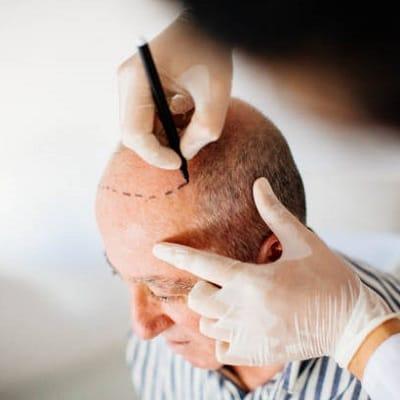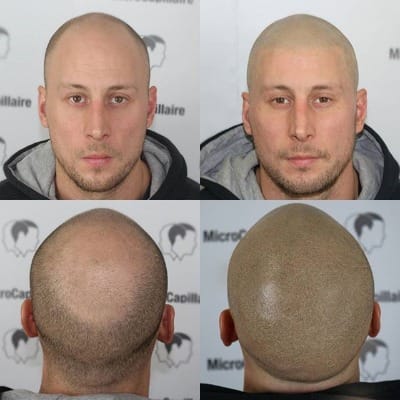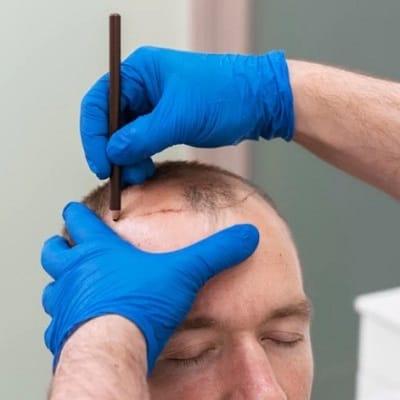Although hair grafting is a frequent and successful approach to addressing hair loss, for some people, one treatment may not be sufficient to achieve the desired outcomes. Therefore, someone could need a second hair transplant for many reasons, including further hair loss or unhappiness with the original results. Hence, this blog discusses What Would Be the Reason for a Second Hair Transplantation.
What Would Be the Reason for a Second Hair Transplantation?
In some cases, patients may need a second hair transplant. Therefore, the following points will describe What Would Be the Reason for a Second Hair Transplantation.
Insufficient Initial Results:
One of the biggest reasons individuals have a second hair transplant is not being content with the outcomes of the previous one. Several factors might be relevant in this regard:
- Underestimation of Hair Loss: The degree of hair loss could not be wholly known at the initial visit. Therefore, it can prevent enough grafts from being transplanted.
- Insufficient graft survival: Not every hair transplant sent through the procedure succeeds. The surgeon’s competence, the patient’s condition, and the post-operative treatment may affect the graft death rates.
- Density: Issues Some individuals might need a second procedure to make their transplanted hair denser as they may not be satisfied with its density.
Further Hair Loss:
Hair loss worsens with time. Even with a successful hair transplant, natural hair loss might persist. This might lead to fresh bald patches or areas lacking hair showing up. Furthermore, people with androgenetic alopecia may continue to lose hair in areas of their heads not impacted or treated after the initial transplant, worsening with time.
Aging and Hormonal Changes: Hormonal changes may aggravate hair loss and thinning as individuals age, so they could need a second treatment to retain their full head of hair.
Advancements in Techniques:
If the initial hair transplant proves insufficient, patients might possibly want a second one. Newer techniques, such as Direct Hair Implantation (DHI) and Follicular Unit Extraction (FUE), offer improved results over old techniques such as Follicular Unit Transplantation (FUT).
Some people decide to undergo a second operation to enhance the outcomes of the first one, as the younger method may provide more natural results and leave fewer scars. Moreover, as the technologies and instruments used for hair transplanting advance, more grafts may survive and be placed more precisely, increasing the appeal of a second transplant.
Scarring or Unnatural Results:
Sometimes the initial hair transplant leaves visible fake foreheads or scars. This might follow from:
- If the surgeon lacks experience, they may leave visible scars or produce a hairline that does not match the patient’s natural hair.
- You may get an infection or fail to recover correctly; scarring may result. One may correct this with another therapy.
Aesthetic Goals and Personal Preferences:
A patient’s face objectives and preferences may evolve with time, leading them to opt for further procedures to achieve the desired appearance.
- Hairline Adjustment: Some patients may smooth their hairline to make it seem more natural or adjust its height or location.
- Higher Density: Patients who first select a modest quantity of grafts may later desire a better appearance.
Preparing for Another Hair Transplant:
You must choose a qualified and experienced specialist if you want a second hair transplant. Proceed as follows to accomplish this:
Consultation: During your visit, discuss your objectives in great detail with your surgeon; examine your hair and create procedure plans.
Health Assessment: Before the procedure, make sure you are in good health and follow advice from your therapist.
Realistic Expectations: Regarding the second contribution, be reasonable about your expectations. Remember that individual circumstances might influence the impact one experiences.
Post-Operative Care:
The second hair transplant depends on careful after-operative care to be successful. Follow precisely what your therapist advises, which may call for:
- Maintaining good cleanliness helps to keep the head free from infection and movement of the grafts avoided.
- Take the medications your doctor prescribes to help your body repair, fight infections, and ease discomfort.
- Attend all of your follow-up appointments to check on things and to immediately address any concerns.
Final Thoughts:
For those who are dissatisfied with the initial results or who are losing more hair, a second hair transplantation might ultimately be a wise option. Knowing the usual causes for having a second treatment and being well-prepared helps patients to receive the results they want and to have a larger, more natural-looking head of hair. Always a wise idea is to discuss your decisions and create a treatment plan that suits your situation with a qualified and experienced therapist.










Leave a Reply